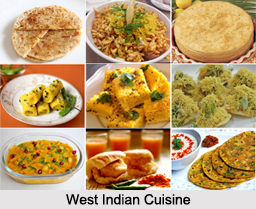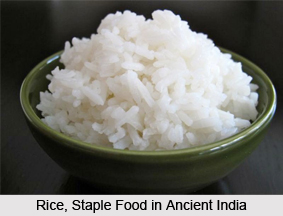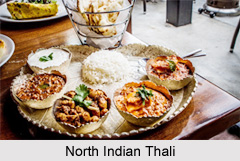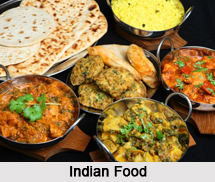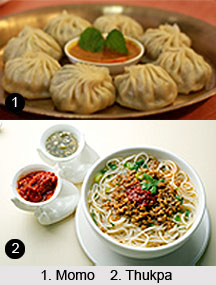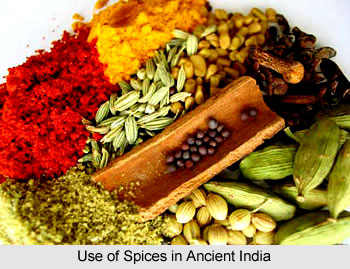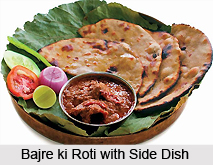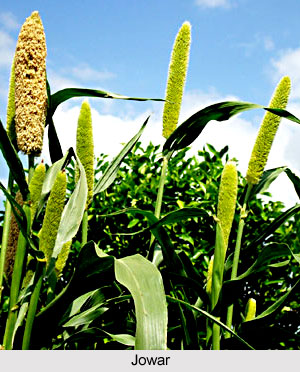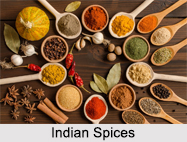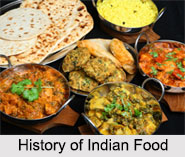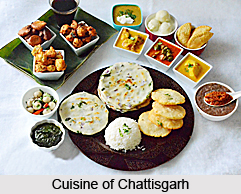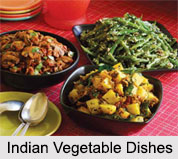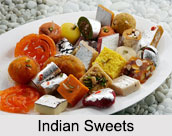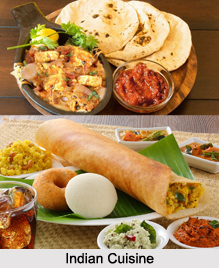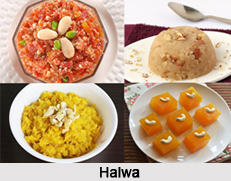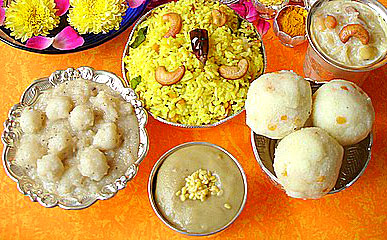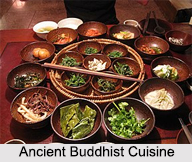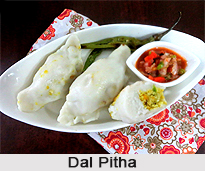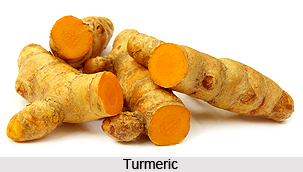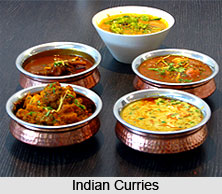 Curry is an incorporation of complex combinations of spices or herbs, usually including fresh or dried hot chillies. The decisive identity of India with the world starts with the flavours of the ubiquitous curry. It has successfully arrested the fascination of the globe all through. It is one delicacy that is prepared with different variations by different chefs.
Curry is an incorporation of complex combinations of spices or herbs, usually including fresh or dried hot chillies. The decisive identity of India with the world starts with the flavours of the ubiquitous curry. It has successfully arrested the fascination of the globe all through. It is one delicacy that is prepared with different variations by different chefs.
The origin of the word `Curry` comes from the Tamil word `Kari`, which is a blend of spices and sauces, chiefly coconut. Curry may contain meat, poultry, fish, or shellfish, either alone or in combination with vegetables. Many are instead entirely vegetarian, especially among those who hold ethical or religious values against eating meat or seafood. However, it has spread all over the country with varieties sprouting up in every Indian province.
In original traditional cuisines, the precise selection of spices for each dish is a matter of regional cultural tradition and religious practice. Such dishes are called by specific names that refer to their ingredients, spicing, and cooking methods.
Traditionally, spices are used both whole and ground; cooked or raw; and they may be added at different times during the cooking process to produce different results. The main spices found in most curry powders are turmeric, coriander, and cumin; a wide range of additional spices may be included depending on the geographic region. Curries may be either "wet" or "dry". Wet curries contain significant amounts of sauce or gravy based on yoghurt, coconut milk, dal or stock. Dry curries are cooked with very little liquid which is allowed to evaporate, leaving the other ingredients coated with the spice mixture.
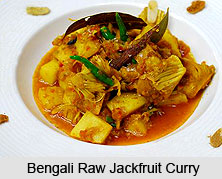 The evolvement of curry in India has now led to a fantastic amalgamation of international cuisines, with the term being just not restricted to Indianised versions. It is usual to distinguish broadly between regional styles of Indian cuisine, recognizing that within those categories are innumerable sub-styles and variations. The distinction is commonly made with reference to the staple starch: wheat in the form of unleavened breads in the north; rice in the east; rice and millet in the south.
The evolvement of curry in India has now led to a fantastic amalgamation of international cuisines, with the term being just not restricted to Indianised versions. It is usual to distinguish broadly between regional styles of Indian cuisine, recognizing that within those categories are innumerable sub-styles and variations. The distinction is commonly made with reference to the staple starch: wheat in the form of unleavened breads in the north; rice in the east; rice and millet in the south.
Karnataka
The curries of Karnataka are typically vegetarian and with spices, coconut and jaggery which are common in tastes. There are both dry and gravy-based curries like Saaru, Gojju, Thovve, Huli, and Majjige Huli; which are usually served with steamed rice.
Bengali Raw Jackfruit Curry Ingredients:
•4 - 5 tbsp oil
•2 diced potatoes
•Half diced jackfruit
•2 - 3 onion
•5 - 7 green chillies
•6 - 7 garlic pods
•1 ginger
•Salt to taste
•5 tsp sugar
•3 tsp turmeric powder
•Half cup finely chopped onion
•4 tsp ghee
•2 - 3 cinnamon sticks
•2 - 3 bay leaves
•8 - 10 green cardamoms
•8 - 10 cloves
•1 tsp coriander powder
•Half tsp red chilli powder
•Half tsp garam masala powder
•Half tsp cumin powder
•1 medium finely chopped tomato
•3 green chillies
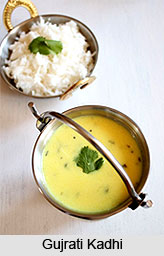 For garnish
For garnish
•Cumin powder
•Finely chopped garlic
•Fennel powder
Method:
Heat oil in a pan and sauté the jackfruit in the oil. Meanwhile, blend onion, green chillies, garlic, ginger, salt and sugar in a blender to a paste. After this, sauté diced potatoes, sugar, salt and turmeric powder in the jackfruit and take them out in a bowl. Now, sauté onion, ghee, cinnamon sticks, bay leaves, green cardamoms and cloves in the already used pan. Next, add the prepared paste, turmeric powder, coriander powder, red chilli powder, garam masala powder, cumin powder, finely chopped tomato and water in it. Then mix the sautéed jackfruit mixture, green chillies and ghee in the pan to cook. Garnish the prepared curry with cumin powder, garlic and fennel powder.
Maharashtra
The curries of Maharashtra vary from mildly spicy to very spicy and include both vegetarian and non-vegetarian dishes. The ingredients commonly used are besan or chickpea flour, and groundnut powder.
Gujarati Kadhi Recipe Ingredients for the Kadhi:
•Sour Yogurt - 1 Half cups
•Besan- 2 tbsp
•Ginger paste - Half tsp
•Green chillies - 3, chopped finely
•Turmeric powder - 1/4 tsp
•Sugar - 3 tsp
•Salt - to taste
•Water - 3 cups
•Cilantro - 4-5 sprigs, for garnishing
For the tempering
•Ghee- 2 tsp
•Mustard seeds - half tsp
•Cumin seeds - half tsp
•Dry red chilli - 1
•Cinnamon - 1 inch piece
•Cloves - 4
•Asafoetida - a pinch
•Curry leaves - 6-7
Method:
Mix all the kadhi ingredients in the pan and make lump free batter with a wire whisk. Put the pan on medium heat and bring it to a boil, keep stirring continuously otherwise yogurt will curdle and separate. Once comes to a boil, lower the heat to low. On another small pan, heat the ghee and add tempering ingredients. Once you get nice aroma of whole spices, add this tempering to the simmering kadhi. Mix well and let it simmer for 5 minutes. Lastly stir in finely chopped cilantro and serve.
Kashmir
The best-known curry is "Goshtaba" and "Rogan Josh", a wet non-vegetarian curry with brilliant red gravy whose colour is derived from a combination of Kashmiri chillies and an extract derived from the red flowers of the cockscomb plant.
The culture and diversity of India and the country`s extraordinary variety of cooking is truly reflected in preparing curry. The secret essence that is reflected through umpteen Indian curries is yet to be perhaps discovered; savouring the platter might to some extent satisfy one`s craving for more.
